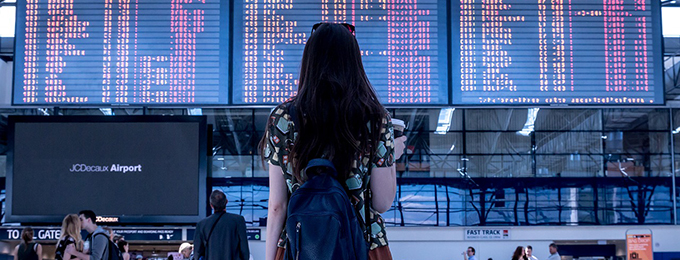As Europe and the world grapple with COVID-19, guidelines and rules on international traveling will remain difficult to predict in the coming months.
The coronavirus outbreak suddenly confronted students and other learners across Europe with travel restrictions. Not only traveling into and from the EU became restricted, also Schengen Member States (MS) and Associated Countries (AC) introduced travel restrictions and border controls between each other. This corona crisis confronts a multitude of actors – the European Commission (EC), governments of Schengen MS and AC, (higher) education institutions, learners and students in particular with difficult questions and decisions about mobility and exchanges within Europe and internationally. The EC invited Erasmus+ National Agencies to invoke ‘force majeure’ for Erasmus+ beneficiaries (see SwissCore article) and has been in dialogue with National Agencies and stakeholder organisations on its implementation in the past weeks. More guidelines, above all regarding student mobility in the autumn semester, should follow soon. On the Swiss side, Movetia is working on the issue as well.
Governments assess their schedules to reopen borders and schools whether to postpone and how to modify higher education entry exams. Higher Education institutions search for ways of maintaining international mobility in the coming autumn term either physically or via digital means, and some have already decided not to send out students. Education institutions are also thinking about how to potentially adopt their international strategies for the longer run. Young people seek for ways of gaining intercultural competences – also in case they would not be able to study or volunteer abroad. Companies are reflecting what the current experiences could mean for their activities and the workforce they need.
When it comes to the borders, the EC published a series of guidelines and recommendations regarding travels in Europe and beyond on 13 May, proposing a coordinated approach by the EU Member States. Schengen area MS and AC temporarily reintroduced border controls (see notifications here, incl. Switzerland). On 8 May, the EC invited the Schengen MS and AC to prolong the current travel restriction on non-essential travel from third countries into the Schengen area until 15 June 2020.
When educational institutions can welcome international learners and send learners abroad again will depend on the epidemiological development, and of course, the implementation of the guidelines is in the competence of the Member States. Germany, Austria, France and Switzerland e.g. agreed to start reopening borders gradually in view of having no restrictions anymore as of 15 June. Italy decided unilaterally to open its borders to EU tourists from 3 June. At the same time, Norway e.g. will likely keep travel restrictions in place until 20 August with a potential gradual lift of restrictions for Nordic countries first. As the Norwegian academic semester starts on 10 August this year, the higher education sector expects negative impacts on its international activities.
For the Higher Education sector, Universities UK International (UUKI) maps global developments regarding the status of university re-openings and higher education entry exams on their website (use “Global Response” tab for the interactive map; the country fiches are updated once a week). However, the website includes many more resources that may address some of the questions raised above. The German Academic Exchange Service (DAAD) website as well provides a nice list of resources on corona-related effects on higher education, including survey results of how prospective international students react to COVID-19.
Please feel free to share with us any other resources you deem helpful for others, particularly resources touching upon how COVID-19 might influence the internationalisation of school education and Vocational Education and Training.

